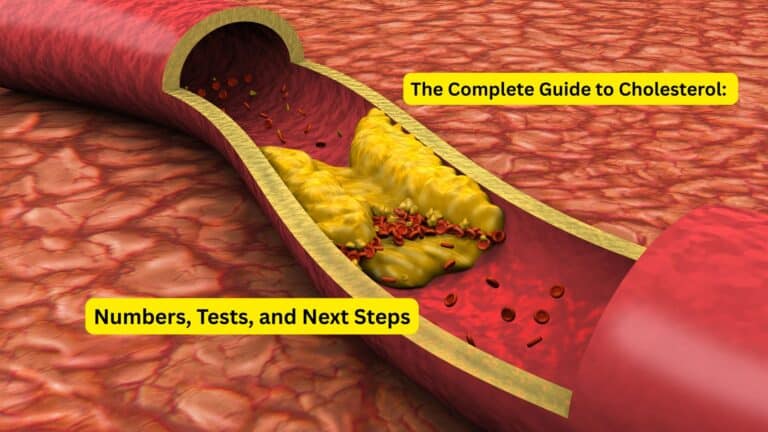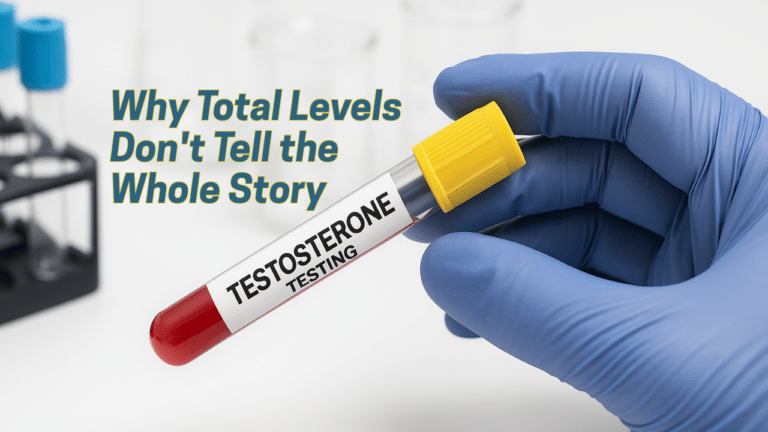Food allergies and food intolerances both cause adverse reactions to foods, but they are fundamentally different conditions with distinct causes, symptoms, and risks. Despite their differences, these conditions are often confused or used interchangeably, leading to misunderstandings about treatment approaches and potential dangers.
Understanding the distinction between food allergies and intolerances is crucial for your health and safety. Food allergies involve your immune system and can be life-threatening, while food intolerances primarily affect your digestive system and are generally less severe. This knowledge helps you make informed decisions about testing, treatment, and daily dietary choices while ensuring you don’t unnecessarily restrict your diet or, conversely, underestimate serious health risks.
What is a Food Allergy?
Food allergies represent serious medical conditions where your body’s immune system mistakenly identifies certain food proteins as threats. This immune response can range from uncomfortable symptoms to life-threatening emergencies, making accurate identification and management essential for anyone affected.
Definition
A food allergy occurs when your immune system produces an IgE-mediated response to specific food proteins. When you consume the allergenic food, your immune system releases chemicals like histamine, triggering various symptoms throughout your body. This reaction happens because your immune system has developed antibodies against proteins it perceives as harmful, even though they’re actually safe for most people.
The immune response in food allergies is immediate and consistent—meaning that each exposure to the allergen will typically trigger symptoms, regardless of the amount consumed. Even trace amounts of an allergen can potentially cause severe reactions in highly sensitive individuals.
Symptoms
Food allergy symptoms typically appear within minutes to two hours after consuming the allergen and can affect multiple body systems simultaneously. Common symptoms include hives, swelling of the face or throat, difficulty breathing, rapid pulse, dizziness, and severe digestive distress.
The most serious allergic reaction is anaphylaxis, a whole-body response that can cause your airways to narrow, blood pressure to drop dangerously low, and multiple organ systems to shut down. Anaphylaxis requires immediate emergency treatment with epinephrine and can be fatal without prompt medical intervention.
Other symptoms may include skin reactions like eczema or itching, respiratory problems such as wheezing or nasal congestion, and gastrointestinal symptoms including vomiting, diarrhea, or severe cramping. These symptoms occur because the immune response affects multiple body systems simultaneously.
Risks
Food allergies carry the potential for life-threatening reactions, making strict avoidance of trigger foods essential. Unlike intolerances, where small amounts might be tolerable, any exposure to an allergen can potentially trigger severe symptoms in allergic individuals.
The risk of severe reactions means that people with food allergies must be vigilant about cross-contamination, hidden ingredients in processed foods, and accidental exposure in restaurants or social settings. Many individuals with severe food allergies carry emergency medications and must inform others about their condition to prevent accidental exposure.
What is a Food Intolerance?
Food intolerances involve your digestive system’s inability to properly process certain food components. Unlike allergies, these reactions don’t involve your immune system and are generally less severe, though they can significantly impact your quality of life and comfort.
Definition
Food intolerance occurs when your digestive system lacks the enzymes needed to break down certain food components, or when your system reacts adversely to specific substances in foods. The most common example is lactose intolerance, where people lack sufficient lactase enzyme to digest milk sugar properly.
Other common intolerances include sensitivity to food additives, sulfites in wine, or naturally occurring chemicals in foods like histamine in aged cheeses or tyramine in fermented products. These reactions happen in your digestive tract rather than involving your entire immune system.
Symptoms
Food intolerance symptoms primarily affect your digestive system and include bloating, gas, abdominal cramps, diarrhea, nausea, and heartburn. These symptoms typically develop gradually, often taking several hours or even up to 24 hours to appear after eating the problematic food.
The severity and onset of symptoms often correlate with the amount consumed—many people with food intolerances can tolerate small quantities of the problematic food without significant discomfort. This dose-dependent relationship distinguishes intolerances from allergies, where even tiny amounts can trigger reactions.
Some people also experience headaches, fatigue, or general feelings of unwellness with food intolerances, though digestive symptoms predominate. These reactions, while uncomfortable, don’t typically cause the severe, multi-system responses seen with allergies.
Severity
Food intolerances are generally not life-threatening, though they can significantly impact daily comfort and quality of life. The symptoms, while unpleasant, don’t involve the immune system reactions that can lead to anaphylaxis or other emergency situations.
Most people with food intolerances can manage their condition through dietary modifications, enzyme supplements, or careful portion control rather than complete avoidance. This flexibility in management contrasts sharply with food allergies, which typically require strict elimination of trigger foods.
Key Differences: Allergy vs Intolerance
Understanding the fundamental differences between food allergies and intolerances helps you recognize which condition you might be experiencing and guides appropriate testing and treatment decisions. These differences span multiple aspects of how the conditions develop, present, and should be managed.
The primary difference lies in which body system is involved: food allergies trigger immune system responses, while intolerances involve digestive system difficulties. This fundamental distinction explains why symptoms, timing, and severity differ so significantly between the two conditions.
Immune vs Digestive Response: Food allergies activate your immune system, causing it to release chemicals like histamine that affect multiple body systems. Food intolerances primarily affect your digestive system’s ability to process specific food components, without involving immune reactions.
Timing of Symptoms: Allergy symptoms typically appear within minutes to two hours of consumption and are consistent each time you’re exposed. Intolerance symptoms often develop more slowly, sometimes taking 12-24 hours to fully manifest, and may vary based on the amount consumed.
Severity and Life-Threatening Risk: Food allergies can cause anaphylaxis, a medical emergency requiring immediate treatment. Food intolerances, while uncomfortable, don’t typically pose life-threatening risks and are more about quality of life and comfort.
Management Approach: Allergies usually require complete avoidance of trigger foods and carrying emergency medications. Intolerances often allow for more flexible management, including consuming small amounts, using enzyme supplements, or finding alternative preparation methods.
Special Case: Celiac Disease
Celiac disease represents a unique condition that doesn’t fit neatly into either the allergy or intolerance category. This autoimmune condition shares characteristics of both but requires its own understanding and management approach.
Celiac disease is an autoimmune condition triggered by gluten proteins found in wheat, barley, and rye. When people with celiac disease consume gluten, their immune system attacks the lining of their small intestine, causing inflammation and damage that can lead to serious long-term health complications.
Unlike typical food allergies, celiac disease doesn’t cause anaphylaxis or immediate severe reactions. However, unlike simple food intolerances, it involves immune system activity and can cause significant intestinal damage over time if untreated. The condition requires complete lifelong avoidance of gluten, similar to food allergies, but the symptoms and health risks are distinct from both categories.
Celiac disease affects approximately 1% of the population and requires specific testing for diagnosis, including blood tests for antibodies and sometimes intestinal biopsy. The condition can cause digestive symptoms similar to food intolerances but also systemic effects like anemia, bone loss, and increased risk of certain cancers if left untreated.
Diagnosis and Testing
Accurate diagnosis is essential for distinguishing between food allergies and intolerances, as the management strategies differ significantly. Professional testing helps avoid unnecessary dietary restrictions while ensuring serious allergic reactions are properly identified and managed.
Food Allergy Testing involves several approaches, starting with detailed medical history and symptom assessment. Skin prick tests introduce small amounts of allergens under the skin to observe reactions, while blood tests measure specific IgE antibodies that indicate allergic sensitization to particular foods.
In some cases, supervised oral food challenges conducted in medical settings provide definitive diagnosis by carefully administering increasing amounts of suspected allergens while monitoring for reactions. These challenges are considered the gold standard for food allergy diagnosis but must be performed in facilities equipped to handle severe reactions.
Food Intolerance Assessment typically relies more on clinical evaluation and elimination diets rather than specific laboratory tests. For lactose intolerance, breath tests can measure hydrogen production when undigested lactose ferments in the colon. Elimination diets involve removing suspected foods for several weeks and then systematically reintroducing them while monitoring symptoms.
Why Professional Testing Matters: Self-diagnosis often leads to unnecessarily restrictive diets or, conversely, failure to recognize serious allergic conditions. Professional evaluation ensures appropriate testing methods and accurate interpretation of results, helping you develop safe and effective management strategies.
Walk-In Lab offers accessible allergy and intolerance testing panels that can help guide your next steps, providing convenient access to professional-grade diagnostic tools without requiring a doctor’s visit first.
Managing Allergies and Intolerances
The management approaches for food allergies and intolerances differ significantly, reflecting the distinct nature of these conditions. Understanding appropriate management strategies helps ensure both safety and quality of life while avoiding unnecessary restrictions.
Food Allergy Management centers on strict avoidance of trigger foods and emergency preparedness. This includes learning to read food labels carefully, understanding cross-contamination risks, and communicating your allergies clearly in restaurants and social situations.
People with severe food allergies should carry epinephrine auto-injectors at all times and ensure that family, friends, and coworkers know how to use them in emergencies. Creating an emergency action plan with your healthcare provider helps ensure quick, appropriate responses to accidental exposures.
Food Intolerance Management allows for more flexibility, often involving portion control rather than complete avoidance. Many people with lactose intolerance can consume small amounts of dairy products or use lactase enzyme supplements to help digest milk sugar.
For other intolerances, strategies might include choosing specific food preparations, timing consumption with meals, or using alternative products. Some people find that gradually increasing exposure to problematic foods can improve tolerance over time, though this should be done carefully and preferably with professional guidance.
Shared Strategies for both conditions include developing strong label-reading skills, understanding ingredient lists, and being aware of cross-contamination risks in food preparation. Both conditions benefit from working with registered dietitians to ensure nutritional adequacy while managing dietary restrictions.
Frequently Asked Questions
What is the difference between a food allergy and food intolerance?
Food allergies involve your immune system producing antibodies and releasing chemicals like histamine in response to specific food proteins. Food intolerances involve your digestive system’s inability to properly process certain food components. Allergies can be life-threatening and require strict avoidance, while intolerances are generally uncomfortable but not dangerous and may allow small amounts of the problematic food.
Can food allergies be life-threatening?
Yes, food allergies can cause anaphylaxis, a severe whole-body reaction that can be fatal without immediate treatment. Anaphylaxis can cause airways to narrow, blood pressure to drop dangerously, and multiple organ systems to fail. This is why people with severe food allergies carry epinephrine auto-injectors and must strictly avoid their trigger foods.
Are food intolerance symptoms immediate?
No, food intolerance symptoms often develop gradually and may take several hours or even up to 24 hours to appear. The timing and severity of symptoms often depend on the amount of problematic food consumed, unlike allergies where even small amounts can trigger immediate reactions.
Can I eat small amounts of food I’m intolerant to?
Often yes, many people with food intolerances can consume small quantities of problematic foods without significant symptoms. This dose-dependent relationship is characteristic of intolerances and differs from allergies, where any amount of the allergen can potentially trigger reactions. However, tolerance levels vary among individuals.
How are food allergies diagnosed?
Food allergies are diagnosed through a combination of medical history, physical examination, and specific tests including skin prick tests, blood tests for IgE antibodies, and sometimes supervised oral food challenges. These tests help identify specific allergens and assess the severity of allergic reactions.
Conclusion
Understanding the difference between food allergies and food intolerances is crucial for your health, safety, and quality of life. Food allergies involve serious immune system reactions that can be life-threatening and require strict avoidance and emergency preparedness. Food intolerances, while uncomfortable, primarily affect digestion and often allow for more flexible management approaches.
The key to proper management lies in accurate diagnosis through professional testing rather than self-diagnosis or assumptions. Misidentifying a food allergy as an intolerance could put you at risk for severe reactions, while mistaking an intolerance for an allergy might lead to unnecessarily restrictive dietary limitations.
Whether you’re dealing with suspected allergies or intolerances, professional testing provides the clarity needed to develop appropriate management strategies. This ensures both your safety and your ability to maintain a varied, nutritious diet within the bounds of your specific condition.
Ready to get clarity about your food reactions? Explore Walk-In Lab’s allergy and intolerance testing options to understand your body’s responses and take control of your health today.
Medical Disclaimer: This article is for informational purposes only and does not substitute for professional medical advice. Always consult with a healthcare provider for personalized medical guidance and treatment recommendations.






